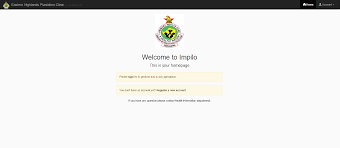
Since February 2015, the Ministry of Health and Child Care with help of funding partners has been designing, developing, and testing an electronic health record (EHR) system, named “Impilo”. This is meant to reduce the current burden of paper data collection for health workers and ultimately improve the quality of care in public health facilities.
After conducting pilots in both rural and urban areas, the government announced that it will now be embarking on a nationwide rollout. The goal is to deploy Impilo at the 5 central hospitals, 7 provincial hospitals, 30 district hospitals, and 384 clinics across the country. Training sessions for health workers have begun at provincial hospitals across the country chasing a goal of full deployment by December 2023.
The Ministry adopted a HIS enterprise architecture with an interoperability layer. The architecture of Impilo is based loosely on the Open Health Information Exchange (OpenHIE) architecture best practices, where captured data are stored in and accessed from standardised repositories via a central interoperability layer.
The core of Impilo is the Interoperability Layer. This facilitates message exchange between all the components in the architecture. Impilo is being rolled out as a web app and a mobile app
Looking at the system, several opportunities for tech entrepreneurs present themselves.
1. The Open HIE
Impilo is built around the OpenHIE framework following the principles of enterprise architectures. This incorporates scalability as the system can add more functionality over time as the interoperability layer has adapters for plugins to various systems. This creates room for 3rd party health applications to integrate with the system allowing them to export or import health information. This means an electronic health record (EHR) being used at a private hospital could exchange information with Impilo to allow continuity of care for a patient moving from private to public or vice versa. This is good news for National Electronic Health Record System vendors who are currently competing for market share amongst the private hospitals and clinics. The opportunity created by the health information exchange extends beyond the health sector. An insurance company as part of the underwriting process can import health information from Impilo to determine a life insurance policy. There is vast potential for local 3rd party developers to exploit, just as Impilo was 100% made locally.
2. Maturity Model
The HIMSS Electronic Medical Record Adoption Model (EMRAM) is one of the models used to measure the level of advancement of patient information management systems. Assessing Impilo on this scale, the EHR can be argued to be at Level 2 or 3 capability. This means there is room for a lot more functionality to be added. This includes a Clinical Decision Support System (CDSS), a Radiology Information System (RIS) with a full complement of PACS (Picture Archiving and Communication System) and business intelligence analytics. Forward-thinking entrepreneurs should invest in developing solutions to deliver these functionalities that build on Impilo as a foundation. Instead of building a whole EHR from scratch, they can choose to focus on just perfecting a CDSS or data analytics application as a singular plugin.
3. Infrastructure
The role out of Impilo is a massive undertaking that needs a lot of infrastructure to set it up and maintain it. Procurement processes will hopefully be updated to allow private players to supply hardware or offer technical support services. Network engineers will be needed to set up LANs and wireless access points. The Ministry of Health announced that it has also partnered with the Global Fund through the United Nations Development Programme to launch and sustain a nationwide project for broadband connectivity in the country’s top 350 health facilities, based on patient volumes. There is also a need for backup power at these health facilities. This an opportunity for solar and renewable energy entrepreneurs to get some business.
4. Security
Health records contain very sensitive information hence, data security and privacy are of the utmost importance. As Impilo is scaled nationally, there is a need to address any security vulnerabilities in the software to ensure the central data centre is securely managed and databases are securely backed up. This calls for entrepreneurs who are data security specialists as improving the system security will be an ongoing endeavour.
5. Big Data
The National Electronic Health Record System will create a reservoir of valuable health information as it will longitudinally track an individual’s health information from birth to death. This is Big Data! Data engineers and analysts can therefore use this to conduct health research. Instead of researchers spending hours digging through paper archives, a quick clever search algorithm can be employed. There will be a demand for research tools that are custom made to dive into the pool of data and extract required insights.
6. Non-communicable diseases
The architecture of Impilo allows for the addition of modules as a way of making continuous improvements. One module that is needed is a non-communicable disease module that not only focuses on treatment but also incorporates prevention. Non-communicable diseases include diabetes, cardiovascular disease, and cancer. These are taking over in burden from infectious diseases such HIV, TB and malaria. Non-communicable diseases are the emerging battlefront. The hope in this battle is that these diseases are largely preventable through making lifestyle changes. This necessitates a robust module on Impilo that could sync with an activity tracking app. This could export information on a patient’s physical exercise to the EHR allowing clinicians to follow up on their patient in-between visits. The 3rd party application could then import clinical information such as a patient’s prescribed medication or diet to then adjust the exercise routine.
7. IoT
Smart health devices that can digitally send health information directly into the Impilo database will be needed. This extends from IoT enabled thermometers and Bp machines to continuous monitoring devices that transmit information in real-time such as oxygen saturation, blood sugar level and ECG. These are needed extensions to the EHR to reduce human errors, make healthcare more proactive and make the entire care process paperless. Medical device suppliers will have to pivot towards supplying more of these smart gadgets as the EHR will make full use of them.
8. Artificial Intelligence
EHR systems are the foundations for AI applications in 2 ways. They provide digital data for the development of machine learning algorithms and also provide a ready hosting platform for AI applications. The rollout of Impilo then sets the base for AI applications such as clinical decision support solutions that aid in preventing human errors and ensuring that treatments follow approved guidelines and protocols. A wide application of AI is in the field of radiology where it used to pick up abnormalities on digital medial scans. AI can alleviate human resource shortages by taking on certain functions that ease the pressure off health workers. AI could be used to automate the drafting of clinical documentation and prioritization of patients according to the severity of their symptoms.
Impilo’s code will be made Open Source as a gesture towards enabling integration. However, for digital health entrepreneurs to realize value from these opportunities they will have to conform their solutions to the standards that the Health information Exchange uses for full interoperability. Some of the standards used by Impilo are HL7, CDA, CCD, ICD, LOINC, DICOM, SNOMED and RxNorm for drugs.
It took quite a while, from development to nationwide rollout. Partly because the government chose to build a solution from scratch. As Impilo matures, hopefully, private sector solutions will be allowed to plug into the system for faster deployment and realisation of system benefits.-techzim

